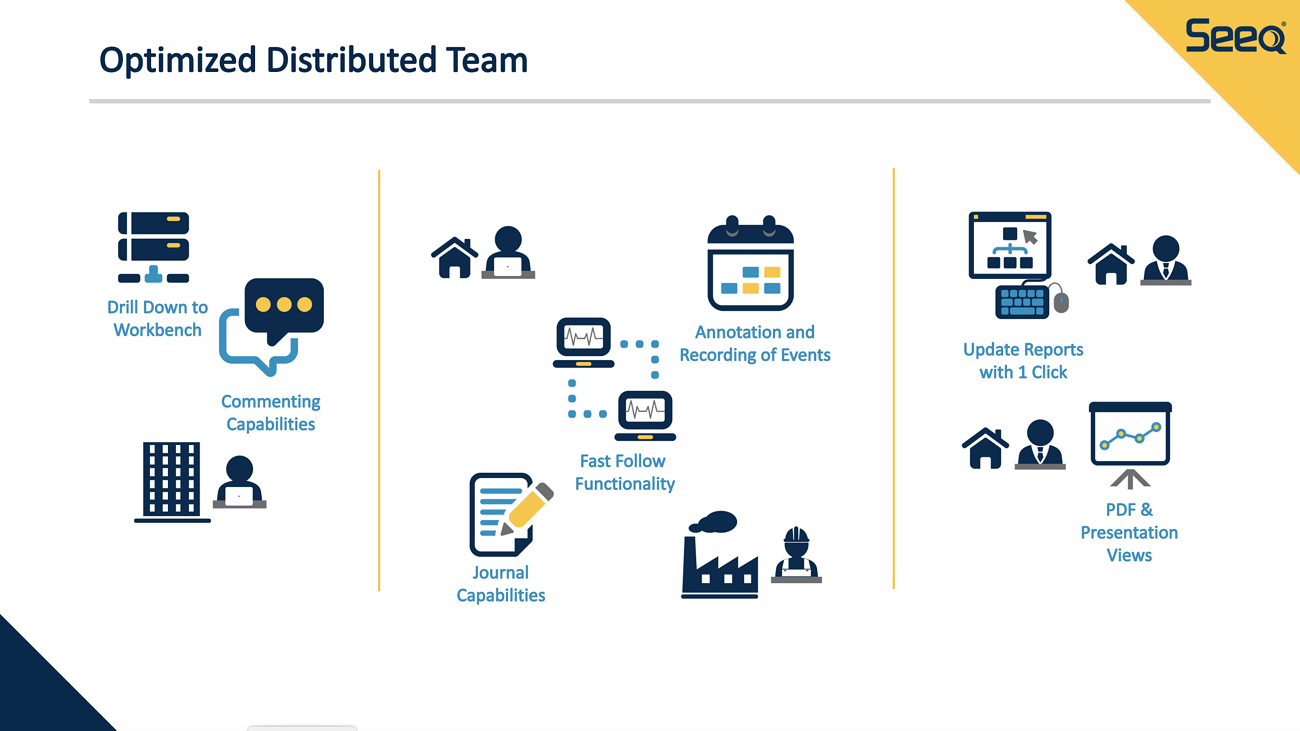
Maintaining Efficient Operations in a Distributed Work Environment
How Technology Can Enhance Productivity and Connectivity for Personnel Away from the Worksite
The landscape of labor has evolved due to innovations in connectivity and mobile devices. This has led to the mobilization of individual workers and globalization of organizations as distributed work has transformed into a practical arrangement.
In the midst of this transition the coronavirus pandemic comes as a shock to organizations with its implications for workplace restrictions and stay-at-home orders. For some companies it means a reduction in service offerings and even temporary closures. For others, it is forcing a quick shift to support distributed work to keep their business operational. And some organizations are already on the path to distributed work which provides an advantage in maintaining normal operations.
Widely available collaborative technology and cloud-based solutions can enhance productivity and connectivity for personnel away from the worksite, but there are important differences when employees who are used to working in proximity to each other are no longer in the same location. As a virtual company since day one, Seeq has our own experiences in supporting remote work and those of our customers who are rapidly implementing distributed work policies. We shared a set of these insights in a recent webinar and summarize several of these points below.
Shifted Reality
When teams share a common site, they are used to certain fundamentals of connection such as shared conference rooms, in-person reactions, hallway and breakroom conversations, and the ability to quickly drop by a coworker’s space to clarify a point. In the distributed work landscape, connection has a different feel, requiring the use of tools such as audio/video conferencing, instant messaging, and software sharing to keep on the same page with coworkers.
While these services enable collaboration, oversight and intentionality are required to maintain effective operations, especially in a plant environment. It is imperative to chart out expectations for team communication and establish procedures for effective information-sharing to maintain safe, reliable and efficient operations.
Software can Help!
Seeq does more than enable advanced data analytics—Seeq facilitates coworking from a distance. For example users can employ Seeq’s fast follow feature to troubleshoot a plant issue with a coworker from afar, with both parties able to control a mouse cursor and view actions taken on-screen. An administrator, operator, and engineer can troubleshoot in real time, together though far apart.

What about those anomalies that occur at the plant—the ones in which the new hire is frantically looking through documentation while a plant veteran makes a seemingly minor adjustment and quickly solves the problem? Seeq Journal and event annotation capabilities assist in transferring tribal secrets into organizational knowledge by automatically logging events and enabling users to add comments as annotations to data. These entries are searchable and recallable at a later date, helping train new personnel and retaining knowledge for the future.
Three Top Tips for Distributed Work
In addition to Seeq software and features and plant analytics, we are also sharing our experience in distributed work delivers benefits and challenges. And take it from Seeq, where all employees are distributed workers. Here are three top tips to improve effectiveness:
- Take social breaks: allow yourself some time to conference call or chat with coworkers about life, and be open to them doing the same. This is necessary, more so now than ever before.
- Have some fun: while you may not be able to host a traditional office party in a distributed work environment, hosting a virtual party can greatly bolster workplace connections. Seeqers have hosted virtual events from baby showers to a Halloween murder mystery party. Planning these events requires creativity, but it is worth the investment. Supervisors should encourage time for planning and attending social events as a mechanism for building and maintaining relationships among coworkers.
- Procure quality equipment and turn the video on! The single-most important piece of hardware for distributed work, aside from the laptop, is a headset with a high-quality microphone. Ensure you can hear others and others can hear you with minimal distraction. If you opt for a wireless headset, you may be able to roam the house, fold the laundry, or unload the dishwasher—so long as you are not running the meeting or taking the minutes! For focused meetings, keep the video function on to maintain your own engagement and encourage others to also focus their attention.
The gradual migration to distributed work with innovations in connectivity and mobile devices has been upended, replaced by an extreme transition to new working models with remote employees, remote access to data, and employees working alone, together. With new approaches to collaboration, new software, and support for remote work practices many personnel will likely find virtual work convenient and productive.
We hope these tips and tricks help in present circumstances and in the future as distributed work continues to become more common.